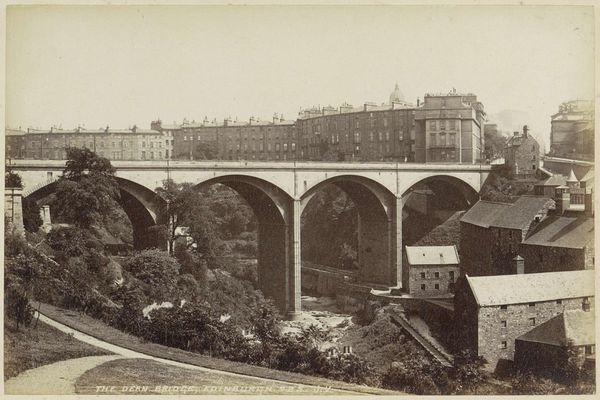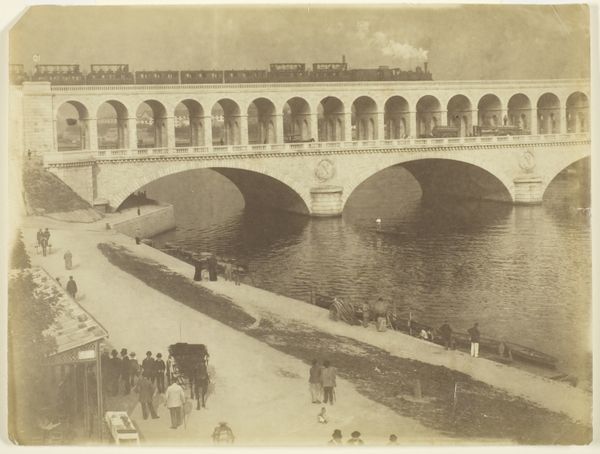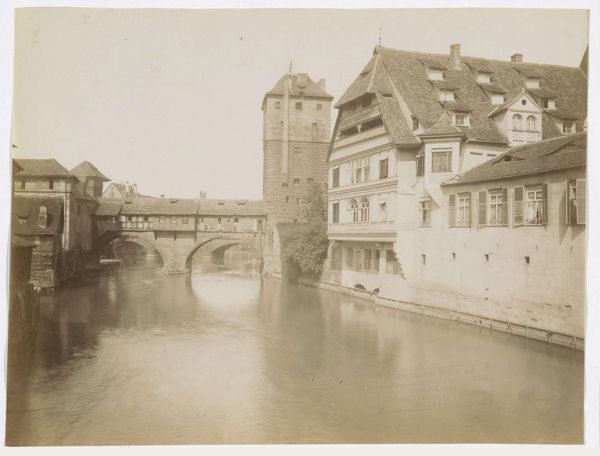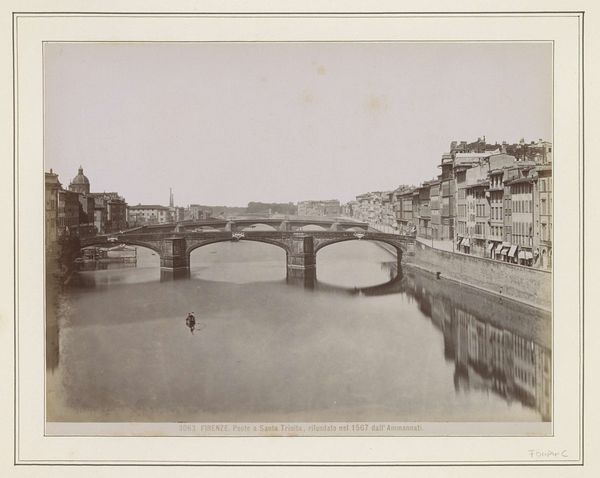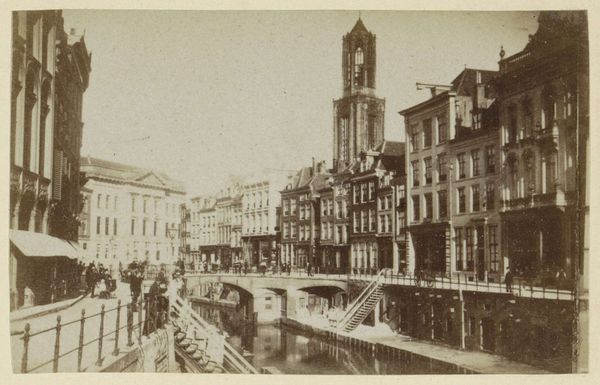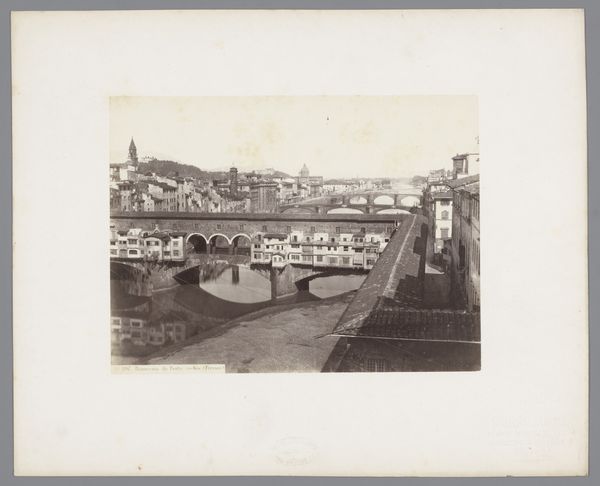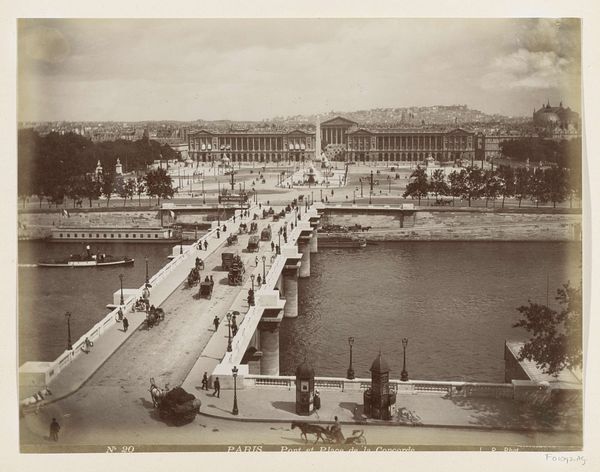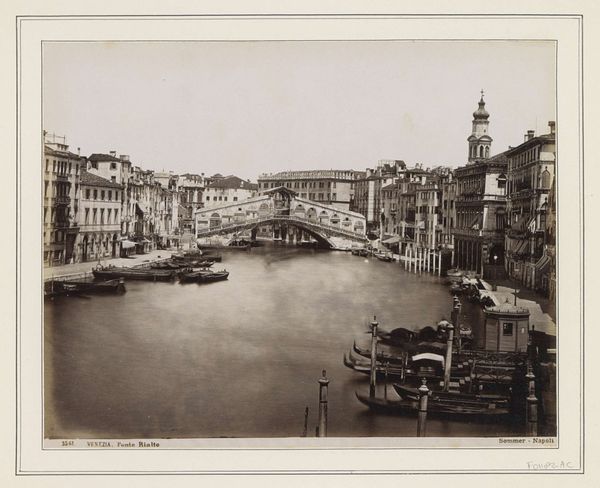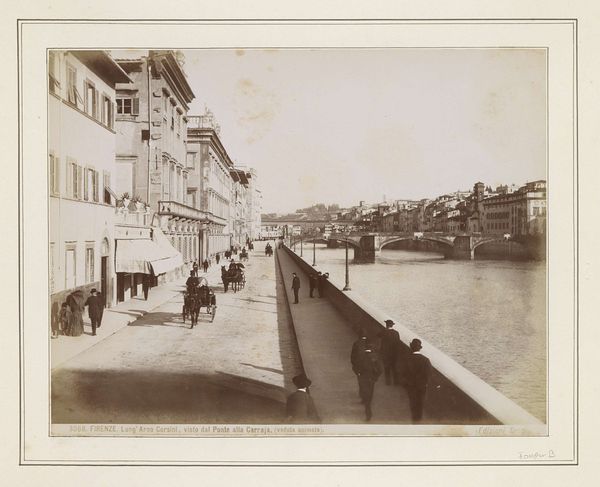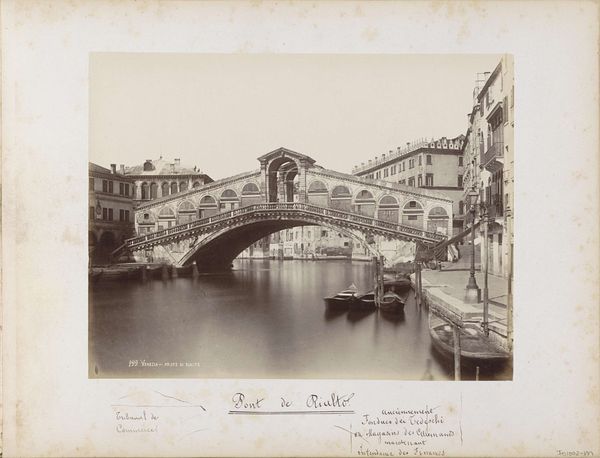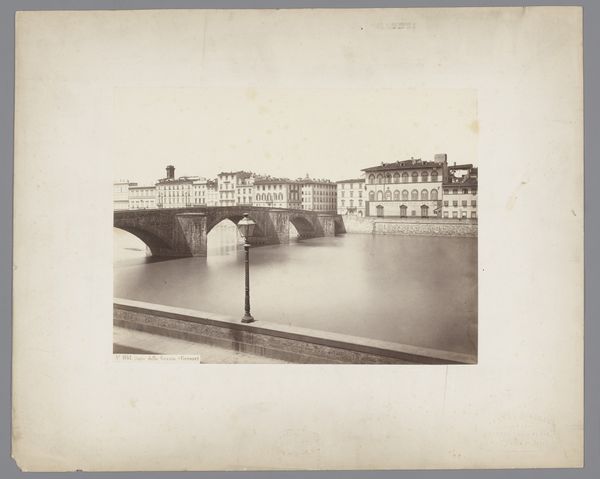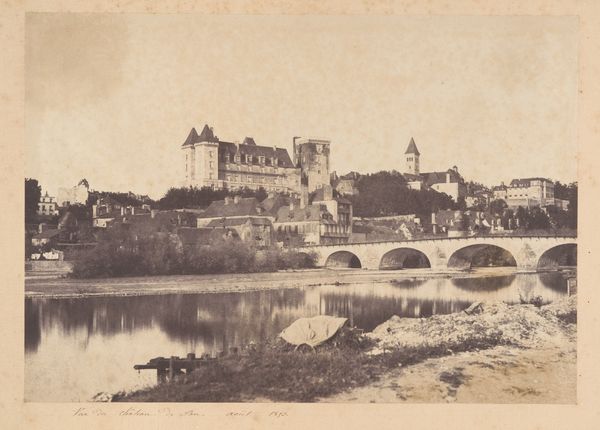
photography
#
landscape
#
photography
#
cityscape
Dimensions: height 70 mm, width 82 mm
Copyright: Rijks Museum: Open Domain
Editor: This photograph, "Gezicht op de rivier, een kade en het viaduct van Morlaix," taken in 1901, captures a city scene with incredible detail, using photography. The viaduct looms so large, dominating the urban landscape. What can you tell me about it? Curator: Looking at this piece through a materialist lens, what immediately strikes me is the relationship between labor, industrial progress represented by the viaduct, and the everyday lives of the people depicted. Notice the meticulous paving stones along the quay – each one individually placed through manual labour. How does this handcrafted element contrast with the mass-produced iron and stone of the viaduct itself? Editor: That's interesting. So you're saying it's about the clash of different modes of production? The viaduct, almost like a symbol of modernity, imposed upon the more traditional city? Curator: Exactly! And consider the material reality of the photograph itself. Photography, at this time, was heavily reliant on chemical processes and specific technical expertise. Its accessibility was far from what it is today, creating a distinct social stratification tied to image-making. To what extent did this affect how a subject such as Morlaix was framed and viewed? Editor: That makes me think about who had access to the means of creating and consuming images like this back then. It’s a powerful point – the technology shapes not only what is depicted but also how it's consumed. Curator: Precisely! This photograph isn't just a depiction of a cityscape, but a record of changing material conditions and the unequal access to technological advancements and their depictions within early 20th century society. Editor: I never considered how the materiality of the medium itself could be so central to understanding the artwork’s message. Thanks!
Comments
No comments
Be the first to comment and join the conversation on the ultimate creative platform.
